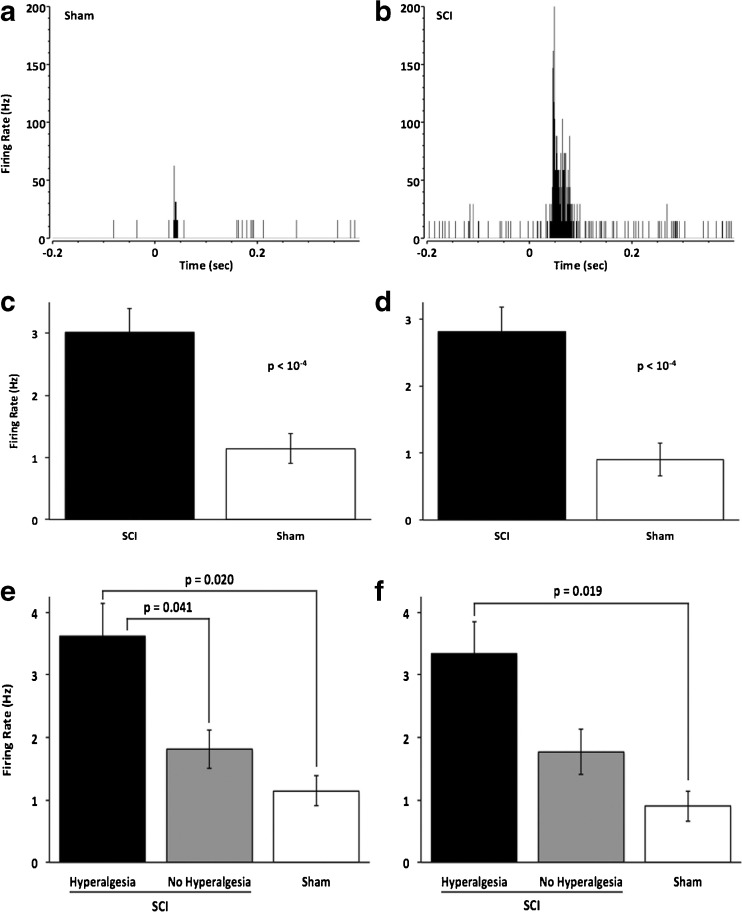Fig. 2.
Contusion spinal cord injury results in increased neuronal activity in the posterior thalamic nucleus (PO). (a, b) Representative peri-stimulus time histograms (1 ms bins) demonstrate that both spontaneous neuronal activity (activity before = 0) and activity in response to a sensory stimulus (delivered at t = 0) is elevated in spinal cord injury (SCI) animals (b) compared with sham controls (a). (c, d) Group data show that spontaneous (c) and sensory-evoked (d) firing rates are significantly higher in SCI animals (n = 81 cells) than in shams (n = 15). (e, f) Spontaneous and sensory-evoked neuronal activity is highest in those animals with clear hyperesthesia. One-way analysis of variance with Bonferroni correction revealed that spontaneous activity (e) was significantly (p = 0.0053) higher after SCI, as well as in animals with hyperesthesia (n = 54 cells), compared with those without hyperesthesia (p = 0.041, n = 27) and sham control (p = 0.02, n = 15), but not between those without hyperesthesia and sham operations. Similarly, sensory-evoked activity (f) is increased significantly (p = 0.0084) after SCI. PO activity in SCI animals with hyperesthesia was significantly higher compared with shams (p = 0.019), whereas activity in animals without hyperesthesia was not significantly higher compared with that in animals with hyperesthesia or in shams

